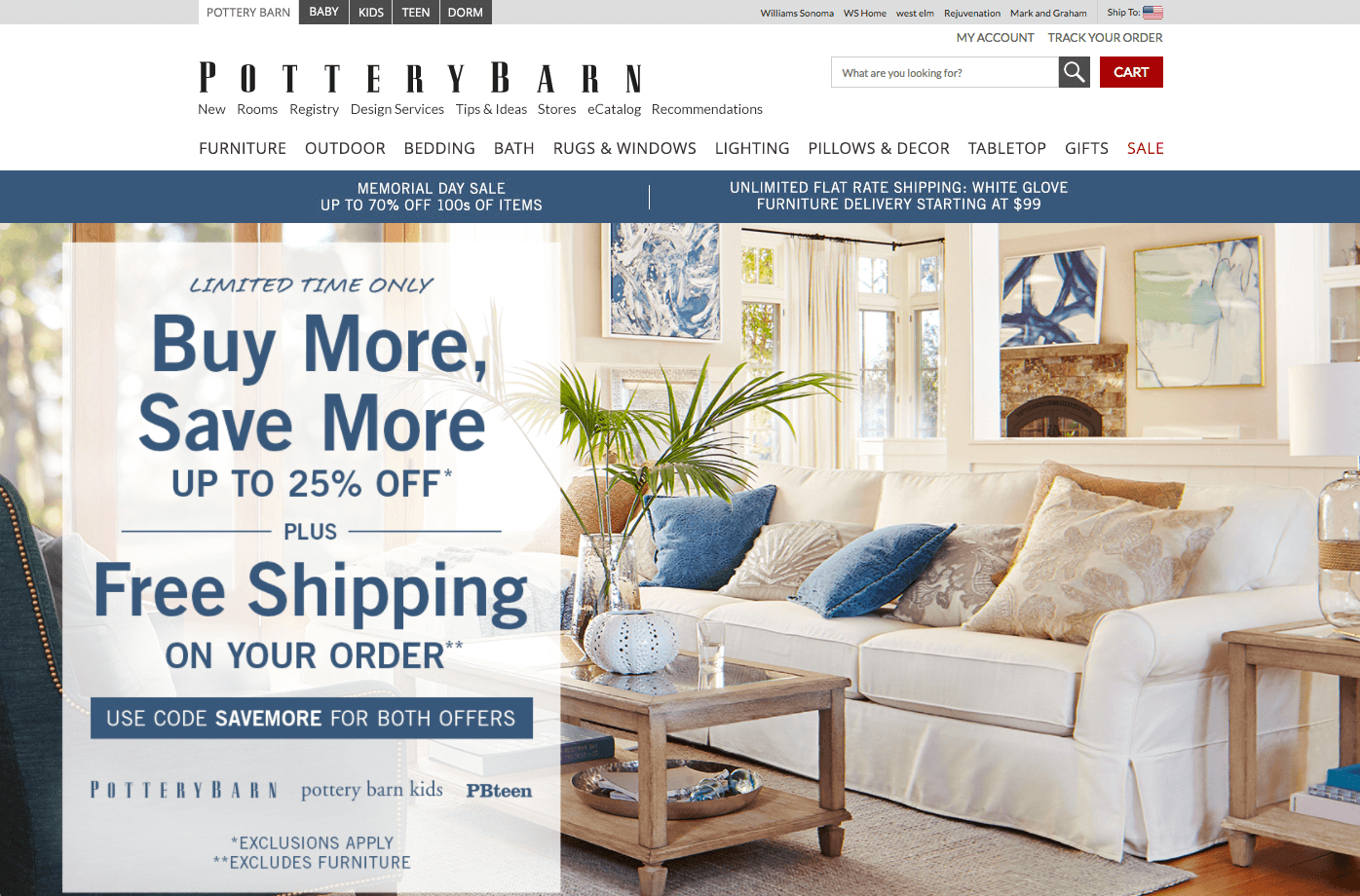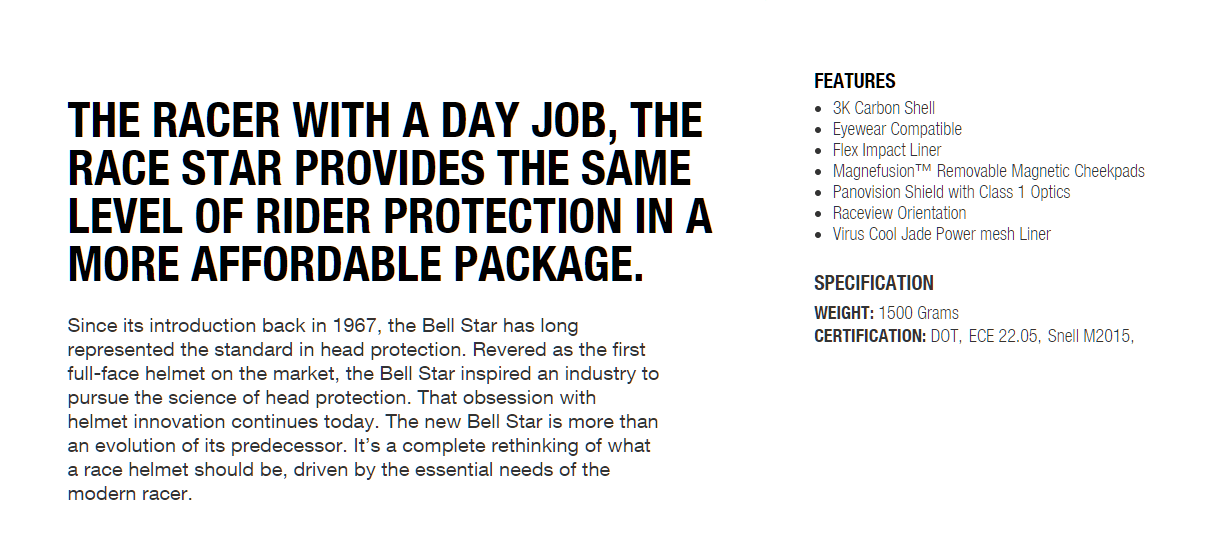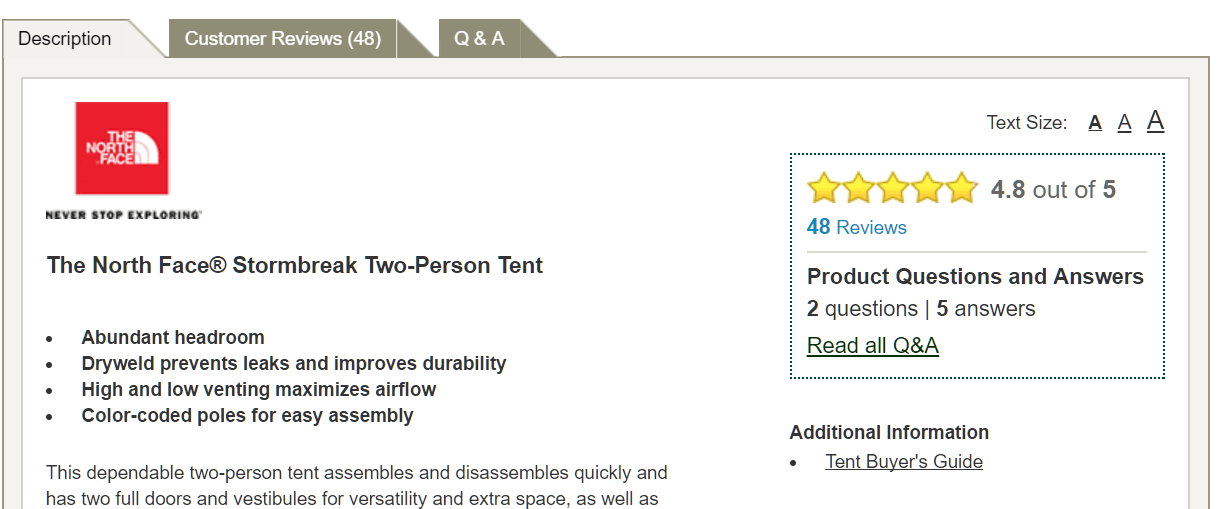
A Simple Guide to Writing Website Copy That Converts
When it comes to writing for conversions, less is often more. Begin with these five steps to start writing better copy that converts.
Website visitors don’t read anymore. Not deeply.
They skim.
They bounce from one pertinent point to another – ready to bail out completely if the material they’re reading/skimming doesn’t do something fast to keep them on the page.
At The Good, we’ve found time and again, that our clients’ landing pages, product detail pages, FAQ pages (and every other page on their ecommerce websites) all have way too much text.

Brands try to jam information in, not wanting to leave anything out. The aim is to convince the prospect to become a customer.
Right now.
Then we come alongside and prepare A/B tests to show the client brand how less copy is often more. We remove the clutter and conversions invariably go up.
Do you want to know how to do that very same thing for your ecommerce site?
Our aim here is to show you exactly how to write copy that converts. We’re going to give you a sneak peek at how our copywriters turn mayhem into a buyer’s paradise.
Writing website copy that converts: Step one
Every page on your ecommerce website should have one job and one job only: it should help the reader advance further along the path to purchase.
Every page on your #ecommerce website should have this one job and one job only. Share on XThat’s it.
How will that page perform its job flawlessly?
That part is up to you.
You have to figure it out. And that’s the first step towards writing website copy that converts.
Step one: You must determine exactly what you want a particular page to do, and that job assignment must be something vital to the process of helping visitors find and buy your solution to their problem(s) – assuming your goods or services are the right solution.
For example, a product detail page will (ideally) provide the necessary information about a certain product. Its job is to give the prospect enough information to make an informed buying decision.
The product detail page should not try to answer every conceivable question about the product, nor should it talk about or picture products other than the one it’s designed to promote.
You must be absolutely clear about the one job the page you’re working on will carry out.
Enjoying this article?
Subscribe to our newsletter, Good Question, to get insights like this sent straight to your inbox every week.
Write it down: Here’s an example of what your work in Step one should look like, using the product detail page as an example:
Page purpose: This page will present the information visitors need in order to determine whether or not our [name the product] will help them solve [describe the problem]. This is vital to the sales journey because it will help visitors decide yay or nay on the product. It will lead them either to an add to cart action or to search for a more fitting solution.
Here’s an example of what your work in Step one should look like, using the home page as an example:
Page purpose: This page will present the information visitors need in order to determine whether or not [name the business] can help them solve their problem with [describe the problem]. This is vital to the sales journey because it will show visitors who we are and the types of problems we can solve for them. From here, visitors can go deeper to find out more about how we can help them.
Resource: 17 Product Detail Page Best Practices

Writing website copy that converts: Step two
Once you’re absolutely clear about the purpose of the page you’re writing for, the next step is to amplify and gain a deeper understanding of the problem.
Note: We’re still in the planning phase of writing. The notes you’re taking in these first few steps are preparatory. Actually writing the page will be the final step.
Much of the time, when we begin working with new clients, we find pages full of jubilant information about the company, its products or services, and how wonderful they both are.
That’s not why the prospect is visiting your ecommerce website.
The prospect seeks a solution to a problem or set of problems. Your job is to understand those difficulties and help people solve them.
Step two begins in step one. You wrote down the general nature of the problem there. Your next job is to write an in-depth description of that problem and make it shine.
You’ve heard that people who buy drills aren’t really looking for a drill – they’re seeking a way to make a hole. That’s the sort of thinking you must do here. Get in the habit of asking “So what?”.
For example, let’s say your product detail page work from the first step (above) described a new type of keyboard cleaning device, and you described the problem as “keeping computer keyboards clean.”
To go deeper into the problems, consider the possible bad things that can happen from having a dirty keyboard. Remember, we’re amplifying the problem here.
You list a potential hazard, then start asking why:
- Hazard from dirty keyboard: The keyboard could malfunction
- So what: It could cause some of your keys to stop working
- So what: It could prevent you from finishing an assignment on time
- So what: That could cause a project to be delayed
- So what: That could cost your company considerable money or lose a client
- So what: You could be fired
We’ve gone from having a dirty keyboard to getting fired. Yes, we’re exaggerating for the purpose of illustration, but do you see why a prospect would get more excited about the prospect of getting fired than from the thought of having a dirty keyboard?
You must not only be able to define the problem your visitor needs to solve, but you need to understand it even better than the prospect. And you need to do that because the copy you write for the page will make the problem so clear in the mind of the visitor that something absolutely must be done to solve it.
Write it down: Here’s a bullet point example of what some of your revelations from Step Two might look like:
- Dirty keyboards can cripple your ability to use your computer effectively
- Dirty keyboards can transmit germs
- If your keyboard is dirty, it looks like you don’t care about your work
- Keyboards always fail at the worst possible time
- A dirty keyboard could invalidate your warranty
- Dirty, sticking keys on your keyboard can make it take much longer for you to finish your work, thereby lowering your ability to produce
- Dirty keyboards affect job performance, and you can lose your job over poor performance
Does thinking about this make you want to check your keyboard?
Good. That’s the idea.
The problem-illumination bullet points for your home page (from the visitors’ point of view) might include things like this:
- I’m on a mission when searching for a product, and I don’t like websites that are confusing – they’re a waste of time
- I need to know whether or not you can solve my problem
- I want to feel like I’m in control of my search – that I’m not being manipulated
- I don’t want a bunch of pop-ups and forced opt-ins confronting me
- I’m looking for a website that will help me, not hammer me with sales pitches
Every page solves a problem. Non-product pages (home pages, about pages, etc.) are no exception.
Resource: How to Make a Landing Page a Rainmaker

Writing website copy that converts: Step three
Once you’ve identified the purpose of the page and shed light on the problem that page is designed to solve for visitors, the next step is to describe exactly how that magic will happen. What is it that your product or service will do for the customer?
Draw up a features/benefit list directly related to the problem. Here’s how the keyboard cleaning product might begin:
- Our keyboard cleaner has a patented ingredient that lubricates keys and protects them from grime – thereby preventing costly errors and downtime
- Our keyboard cleaner includes a natural antibacterial agent that kills germs
- Our keyboard cleaner includes a special polish that keeps keys shining like new
For the home page, your list will be delivering intangible benefits, perhaps, but benefits nonetheless:
- Our home page is clear and simple to use, making it easy for visitors to know where they are and what they can do next to solve their problems
- Our home page uses simple words and symbols that highlight the problems we solve, making it clear where the prospect needs to click
- Our home page is not there to sell, it is there to guide; we don’t put anything in the way of the prospect’s search for a solution
Visitors have many needs, but each page should primarily address only one. One need is the ability to quickly find out why your company is capable and trustworthy. You do that by speaking to the problems and solutions, not by bragging about yourself.
Resource: How Digital Desire Paths Lead to Better Website Design

Writing website copy that converts: Step four
You know the purpose of the page, you know the problem(s) most pressing for the visitor, and you know exactly how the product or information on the page will solve that problem or set of problems. Those three things are the primary preparations necessary before the first word for any page should ever be written.
Step four is where layout and design meet the written word – a wireframe. It’s the place where copywriters and designers accuse one another of being inept. And it’s the place most often mismanaged by in-house teams.
Not only should a word not be written, but neither should a design or wireframe be created before the first three steps are complete. Whether the creative director writes out those three steps or hands the job over to the writer, page content strategy is almost always a team effort.
Step four should be launched by calling a meeting of everyone involved in the process. This is the surest way to prevent the project from disintegrating into a writer vs. designer battle, and it will give even the most adept management decision-maker better insight for making those crucial calls that can make or break a page’s effectiveness.
Go over the work from the first three steps, refine them as needed, then sketch out the components of the page you are creating. Your aim is to make absolutely sure of one thing: the stated purpose of the page must be fully carried out. You should be able to bring in someone totally unfamiliar with the work, ask that person to tell you what the function the page serves, and get an answer that reflects ONLY that purpose.
Remember: Great pages don’t accomplish half a dozen things; they accomplish ONE thing.
Resource: 3 Powerful Design Principles That Improve UX and Conversions

Writing website copy that converts: Step five
Many pages begin with Step Five. That’s a mistake. Without the insight gained from the first four steps, even the best writer would be shooting in the dark.
Step Five is to write the website copy, based on the information gleaned in the preceding steps.
We promised to show you how to write website copy that converts, though – “Where does the ‘conversion’ part come in”, you might ask.
Look back at the steps we’ve covered, and you’ll see that the first three steps are the essence of conversion:
- Step one defines what the conversion would look like
- Step two defines the problem
- Step three proposes the solution
Conversions occur when your content causes the visitor to do, think, or feel the thing you’ve designed the page to accomplish. You measure those conversions by setting up a way to record and tally the indicators you set.
For example, you might determine the primary conversion you want to see happen on the product detail page is an add-to-cart decision. A secondary conversion might be to get the visitor to use the search box to look for a more appropriate product listing.
Your understanding of the problem the visitor wants to solve, along with your understanding of the solution you offer to solve that problem, gives you the ability to present the necessary information in a way that makes it easy for the prospect to make a decision and take the next step.
Conversions are concerned with understanding the prospect and the problem, then delivering the solution. Share on XClosing Thoughts About Writing Website Copy That Converts
Keeping the focus on customers’ needs is one of the most difficult things any company can do. That’s because we want to believe that everyone thinks like we think and everyone wants what we want.
That’s not true.
The more effort you put into understanding your visitors, their problems, and the words they use to describe their problems, the more effective you will be at creating website pages for them.
Testimonials and reviews should always be part of your marketing. Know your customers’ objections and use the words of prior customers to acknowledge and answer them.
Closing tip: Give your visitors the ability to search for what they’re looking for, and make that search function readily available on your ecommerce website. Record all search terms and the pages they originate on. They are a rich source of data, telling you exactly what your visitors want. Using and monitoring reviews is another way of listening to your visitors.
Have you discovered any copywriting insights that help your business convert? Leave a comment and share your best tip with us!
Enjoying this article?
Subscribe to our newsletter, Good Question, to get insights like this sent straight to your inbox every week.

About the Author
David Hoos
David Hoos is the former Director of Marketing at The Good and a trusted advisor to marketing experts.